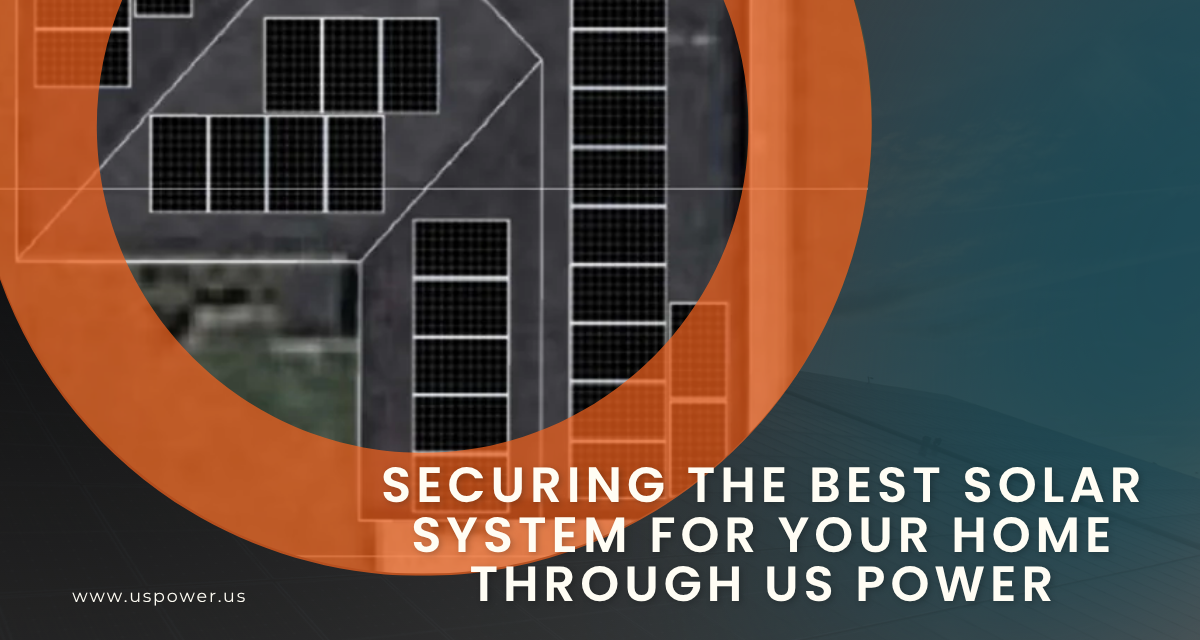Understanding PG&E PTO & Power Control Systems for SoCal

Solar and Roofing Advisor
Avoid PTO delays with US Power, ensure compliance, and maximize energy savings with PCS-certified solar + battery systems for Southern California homeowners.

Southern California homeowners increasingly turn to solar and battery storage solutions to manage soaring electricity bills, especially with PG&E’s evolving policies. If you have a system like a Tesla Powerwall 3 with 11.5 kW of battery capacity and 12.6 kW of solar panels, you may have noticed a clause in your PG&E Permission to Operate (PTO) agreement requiring a Power Control System (PCS). Understanding what a PCS is, why it matters, and how it impacts your ability to import and export power to the grid is critical for maximizing your solar investment.
In this guide, US Power explains everything homeowners need to know about PG&E PTO, PCS requirements, and strategies to optimize solar and battery usage in Southern California.
What is a Power Control System (PCS)?
A Power Control System (PCS) is essentially a limiter that manages how much electricity your solar and battery system can export to the grid. PG&E requires this certification for any energy storage system over 10 kW. Specifically, the PCS must meet UL 1741 CRD standards, ensuring compliance with PG&E’s “No Grid Charge” or “No Storage Export” clauses in the Net Billing Tariff (NBT) agreements.
The PCS communicates with your inverters and battery storage to prevent overloading the grid or violating export limits. Without it, PG&E may delay or deny PTO approval, leaving your system underutilized and affecting your potential savings.
Why PG&E Requires a PCS
PG&E’s main concern is safety and grid stability. Even if your main service panel has surplus capacity, the utility must regulate energy flow from residential solar + battery systems to avoid overloading transformers and the distribution network.
A PCS ensures your system does not push more electricity to the grid than allowed, which is especially important for homeowners with large solar arrays and high-capacity batteries. It’s a key step in getting PTO approval and fully utilizing your solar system.
For homeowners interested in exploring the financial benefits of solar, offers insights into projected savings with properly installed solar and storage systems.
Importing and Exporting Power: How It Works
A common question among SoCal homeowners is: “If I have a PCS, can I still import and export electricity freely?”
Yes, but within limits set by PG&E. The PCS dynamically adjusts the flow of electricity from your solar panels and battery, ensuring compliance with NBT rules while allowing you to export excess power when the grid can safely accept it.
- Importing power occurs when your home consumes more electricity than your solar system produces. Your battery can supplement this demand before pulling from the grid.
- Exporting power occurs when your system generates more electricity than your home consumes. The PCS ensures that the export doesn’t exceed PG&E’s allowed thresholds, preventing fines or PTO delays.
Homeowners looking for ways to maximize solar savings while integrating battery storage can benefit from our guide on How Solar and Battery Systems Protect CA Homes During Grid Failures.
Choosing the Right PCS for Your System
There are multiple options for PCS implementation:
- Manufacturer Built-In PCS
Some batteries, like Tesla Powerwall, come with integrated power control that can communicate directly with your inverter and comply with UL 1741 CRD standards. - Third-Party PCS Devices
If your existing system lacks a certified PCS, a third-party solution can be installed. This device manages export limits and ensures PTO approval. - Installer-Managed Solutions
Most reputable solar installers handle PCS certification and integration for you, avoiding delays with PG&E. Homeowners can ask their installer which PCS method will be used.
For those exploring additional ways to optimize their solar setup, our blog on solar-batteries-are-they-worth-the-cost provides an in-depth look at battery benefits, costs, and ROI.
Key Considerations for Southern California Homeowners
When installing solar + battery systems in SoCal, homeowners must account for:
- PTO Approval: PCS certification is mandatory for systems over 10 kW to secure PTO from PG&E.
- System Size: Ensure your battery and solar panel system is sized appropriately for your home’s energy needs. Check out Understanding Residential Solar System Sizes to calculate optimal system capacity.
- Grid Compliance: Export limits vary based on local transformer capacity and PG&E guidelines.
- Battery Integration: Connect your storage system to the grid for maximum flexibility and savings.
Avoiding Common Mistakes
Many homeowners make the mistake of assuming their solar system automatically qualifies for PTO. Without a certified PCS:
- Your system may not be approved to operate.
- You risk underutilizing your solar production.
- Grid export could be limited, reducing your potential savings.
US Power ensures proper PCS installation and certification, reducing delays and maximizing energy independence. For a detailed step-by-step process, visit our guide on What Does It Take to Get Permission to Operate (PTO).
Maximizing Your Solar Investment
Installing a PCS is not just about compliance—it’s about optimizing energy savings. By correctly managing import/export limits:
- Homeowners can reduce reliance on PG&E during peak hours.
- Battery storage can be leveraged for backup power during outages.
- Solar credits are maximized without violating utility regulations.
If you’re considering upgrading your system, Why Qcells Is the Smartest Home Solar Choice in 2025 explains why QCells panels paired with battery storage offer superior efficiency and long-term savings for SoCal homeowners.
Working with US Power
US Power provides:
- Factory-Direct QCells Panels: Maximize your tax credit and get premium American-made solar panels.
- Certified PCS Installation: Ensures PTO approval and compliance with PG&E’s NBT guidelines.
- Battery Integration: Smart management of Powerwall or QCells Home Core systems.
- Expert Guidance: Avoid costly mistakes and ensure your system is future-proof.
For homeowners ready to take full control of their energy, request a consultation to secure the best solar system for your home through US Power.
For Southern California homeowners, understanding PG&E’s PTO and PCS requirements is essential. A certified Power Control System ensures compliance, maximizes savings, and protects your solar + battery investment. Partnering with US Power guarantees:
- Full PTO compliance.
- Seamless integration of solar and battery systems.
- Premium QCells panels and American-made components.
- Expert advice to optimize savings and energy independence.
Don’t wait—soaring electricity rates and utility regulations are making solar plus battery systems more essential than ever.
Schedule a FREE SOLAR CONSULTATION!
Make sure your home is grid-ready, efficient, and fully optimized with US Power.
Artículos relacionados
Nuestros blogs relacionados
Go solar the right way! Install Qcells panels hassle-free through US Power.
Discover savings and reliability with solar + battery systems through US Power.
Build equity and save with Qcells solar ownership in SoCal. Secure your savings!
Nuestros socios de marcas de energía solar y techos








Empoderamos a las comunidades y las empresas para que aprovechen las energías limpias y renovables energía solar soluciones que impulsan el crecimiento sostenible.
Derechos de autor © 2025 US POWER | Energía solar y techosUS Power - Axia by QCells. All Rights Reserved.
La privacidad es importante para nosotros, por lo que tiene la opción de deshabilitar ciertos tipos de almacenamiento que pueden no ser necesarios para el funcionamiento básico del sitio web. El bloqueo de categorías puede afectar a su experiencia en el sitio web.
Imprescindible
Estos elementos son necesarios para habilitar la funcionalidad básica del sitio web.
Personalización
Estos elementos permiten que el sitio web recuerde las elecciones que ha realizado (como el nombre de usuario, el idioma o la región en la que se encuentra) y proporcionan funciones mejoradas y más personales.
Mercadeo
Estos artículos se utilizan para ofrecer publicidad que sea más relevante para usted y sus intereses.
Analítica
Estos elementos ayudan al operador del sitio web a comprender cómo funciona su sitio web, cómo interactúan los visitantes con el sitio y si puede haber problemas técnicos.
Nosotros y nuestros socios externos utilizamos cookies y otras tecnologías para mejorar y rastrear su experiencia en este sitio, realizar análisis y personalizar el marketing para usted. Al usar el sitio, aceptas que usemos estas tecnologías, incluido el registro y el monitoreo de tus interacciones con el sitio.
¡Obtenga una estimación solar instantánea usando el satélite!











